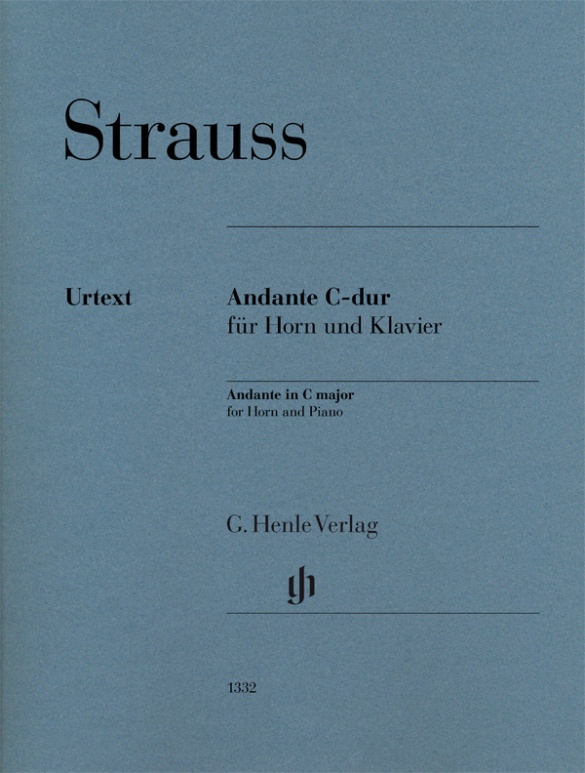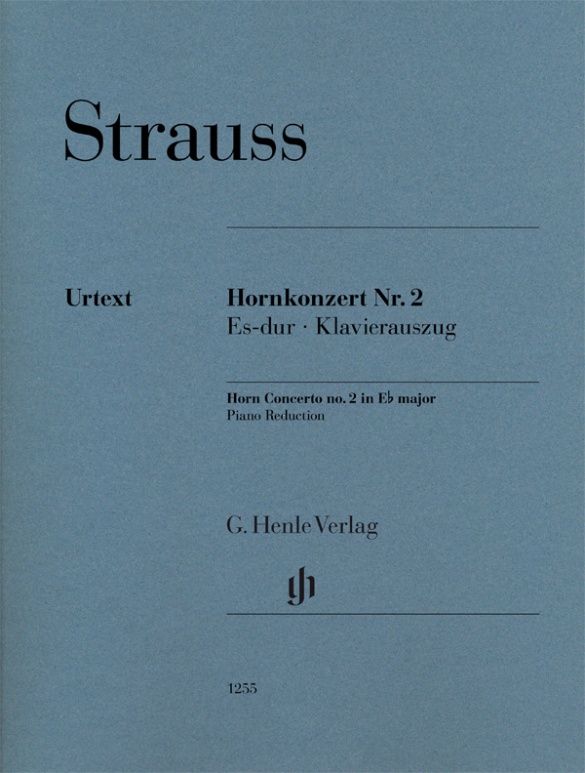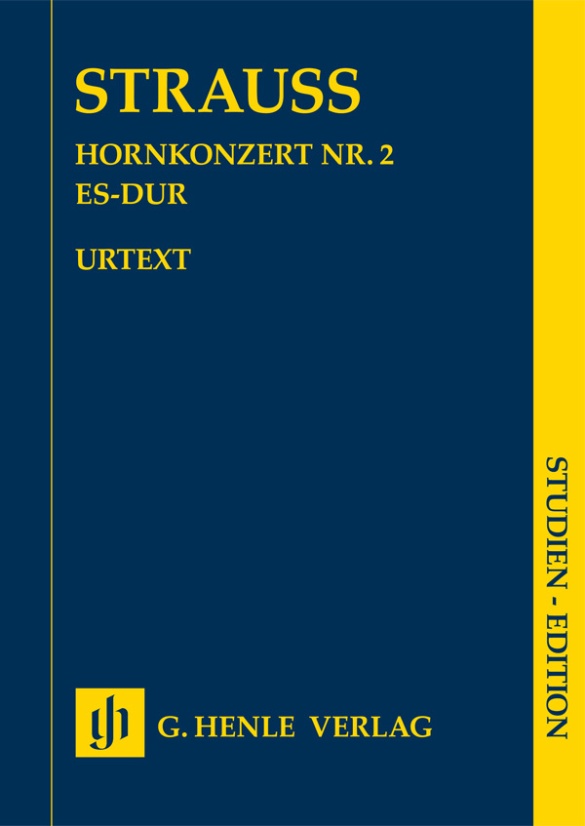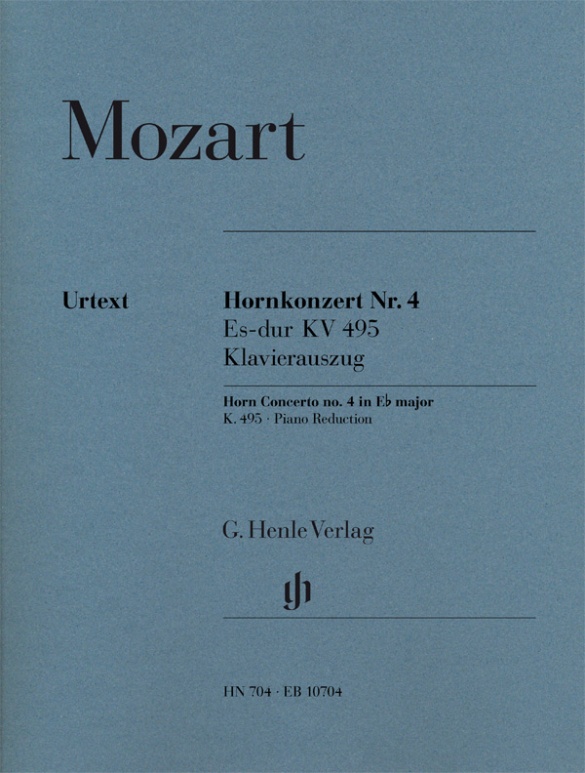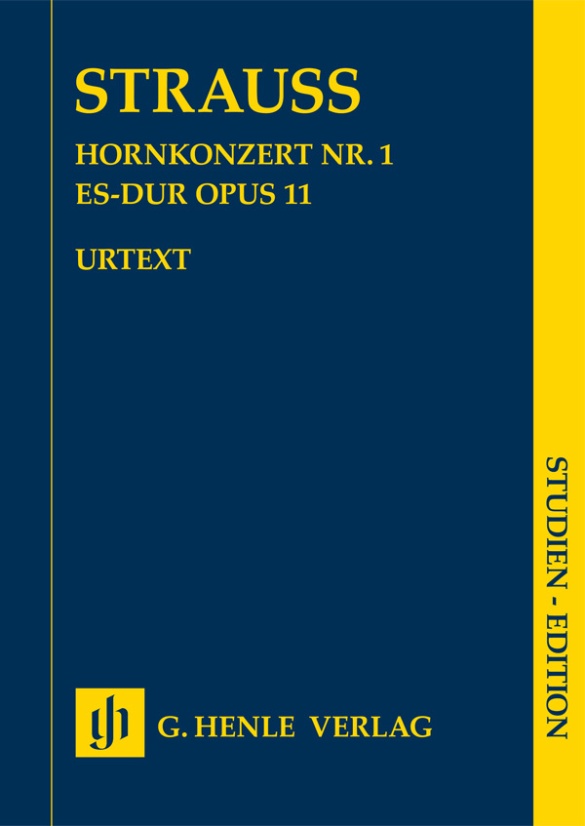

Richard Strauss
Horn Concerto no. 1 E flat major op. 11
With his first horn concerto, the merely eighteen-year-old Richard Strauss succeeded in producing a captivating masterstroke. To this day, the concerto is beloved throughout the world (not only) by horn players, and together with Mozart’s masterworks numbers among the essential pieces in the instrument’s repertoire. Peter Damm, former principal horn for the Staatskapelle Dresden and world-class soloist, has not only performed the concerto publicly over 170 times himself, but has also presented pivotal research findings and publications on its genesis. Prepared after reviewing all surviving sources, the Urtext edition he has edited may thus been regarded as the edition of reference. The orchestral score, available in a practical study edition, eliminates innumerable errors from the first edition.
Content/Details
About the Composer
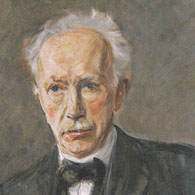
Richard Strauss
One of the most important opera composers of the twentieth century. His oeuvre comprises fifteen operas, nine symphonic poems, instrumental concerti, and a large number of songs. His stage works are marked by their great variety of genre and subject matter.
| 1864 | Born in Munich on June 11, the son of Franz Joseph Strauss, principal horn player in the court orchestra. Receives instruction in piano, violin, and composition. |
| 1885–86 | Conductor at the Meiningen Court Orchestra, initially under the tutelage of Hans von Bülow. |
| 1886 | Music director at the Munich Court Theatre. |
| 1887–1903 | He increasingly devotes himself to the symphonic poem, including “Tod und Verklärung” (“Death and Transfiguration”) in C minor, Op. 24; “Till Eulenspiegels lustige Streiche” (“Till Eulenspiegel’s Merry Pranks”) in F major, Op. 28; “Also sprach Zarathustra,” Op. 30; “Symphonia Domestica” in F major for large orchestra, Op. 53. |
| 1889–94 | Music director in Weimar. First Kapellmeister in Munich in 1894, in Berlin at the Royal Court Opera from 1898–1910. |
| 1905 | Breakthrough with the premiere of “Salome,” Op. 54. |
| 1906 | Beginning of his collaboration with Hugo von Hofmannsthal on the harmonically progressive opera “Elektra,” Op. 58, premiered in Dresden in 1909. |
| 1911 | Sensational premiere in Dresden of “Der Rosenkavalier,” Op. 59, which refers back to operatic tradition and makes him the leading German opera composer. He decides to dedicate himself primarily to operas: “Ariadne auf Naxos,” Op. 60 (1912); “Intermezzo” Op. 72 (1924); “Die ägyptische Helena,” Op. 75 (1928); “Arabella,” Op. 79 (1933); “Die schweigsame Frau,” Op. 80 (1935); “Friedenstag,” Op. 81, and “Daphne,” Op. 82 (1938); “Die Liebe der Danae,” Op. 83 (1944). |
| 1919 | Director of the Vienna State Opera. Premiere there of “Die Frau ohne Schatten,” Op. 65. |
| 1931 | Collaboration with Stefan Zweig. |
| from 1944 | Composition of his last works: Metamorphosen, for 23 solo strings, Oboe Concerto in D major, Four Last Songs. |
| 1949 | Death in Garmisch-Partenkirchen on September 8. |
About the Authors
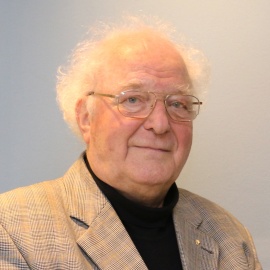
Peter Damm (Editor)
Peter Damm was born in 1937 in Meiningen (Thuringia). After studying at the Hochschule für Musik in Weimar between 1951-1957 under Professor Karl Biehlig, he began his musical career in 1957 as solo hornist with the orchestra of Gera (Orchester der Bühnen der Stadt Gera). Two years later he became principal horn of the Gewandhaus Orchestra Leipzig, a position he held until 1969. From 1969 to 2002 Peter Damm was principal horn with the Dresden State Orchestra (Staatskapelle). On his retirement the orchestra made him an Honorary Member. Other titles conferred upon him include that of Kammermusiker (Chamber musician) in 1967 and Kammervirtuose (Chamber virtuoso) in 1971.
Alongside his orchestra work, Peter Damm also taught at the “Carl Maria von Weber” Conservatory in Dresden, as well as giving international masterclasses and running workshops in Europe, Japan and the United States. He has performed as soloist and chamber musician in almost all European countries, as well as in North and South America and Japan.
Between 1986 and 2018 Peter Damm was President of the International Competition for Wind Instruments in Markneukirchen (Saxony). He is an Honorary Member of the International Horn Society, of the Bavarian Horn Society and the Mozart Society in Saxony. Peter Damm has received numerous prizes and awards. His artistic prowess has been documented on many recordings and through radio broadcasts. His extensive repertoire covers solo, chamber music and concert literature from the 18th century up to and including contemporary music.
After the opening concert of the International Horn Symposium in La-Chaux-de-Fonds (Switzerland) in 2007, Peter Damm retired from the concert podium, also as a soloist. Since then he has dedicated himself to many diverse enterprises: scholarly research into Richard Strauss’ horn concertos, where the investigation into the sources is sometimes similar to detective work, tracing and editing rare literature for the horn, and arrangements for horn ensembles.
Product Safety Informations (GPSR)

G. Henle Verlag
Here you can find the information about the manufacturer of the product.G. Henle Verlag e.K.
Forstenrieder Allee 122
81476 München
Germany
info@henle.de
www.henle.com
recommendations
autogenerated_cross_selling
Further editions of this title
Further editions of this title


